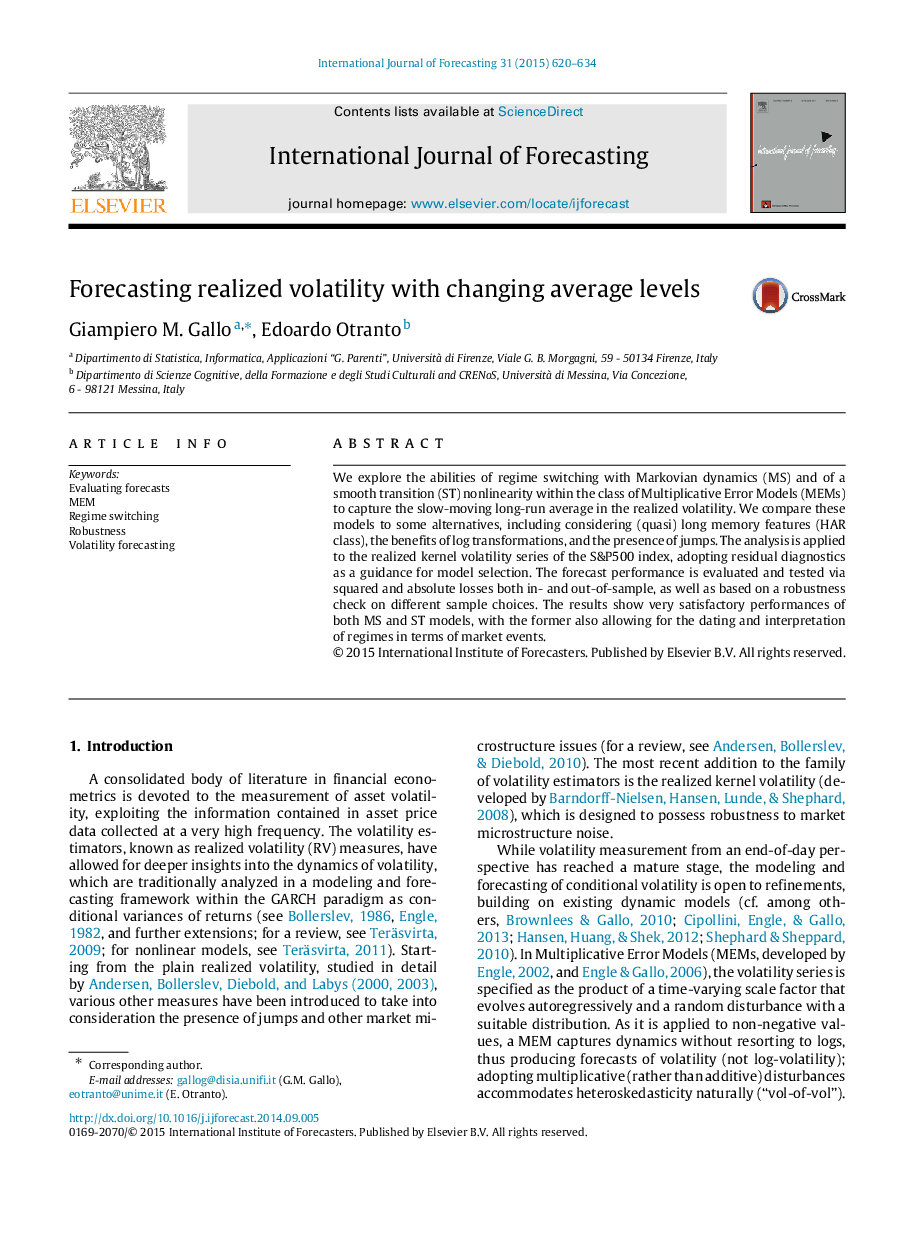| Article ID | Journal | Published Year | Pages | File Type |
|---|---|---|---|---|
| 7408350 | International Journal of Forecasting | 2015 | 15 Pages |
Abstract
We explore the abilities of regime switching with Markovian dynamics (MS) and of a smooth transition (ST) nonlinearity within the class of Multiplicative Error Models (MEMs) to capture the slow-moving long-run average in the realized volatility. We compare these models to some alternatives, including considering (quasi) long memory features (HAR class), the benefits of log transformations, and the presence of jumps. The analysis is applied to the realized kernel volatility series of the S&P500 index, adopting residual diagnostics as a guidance for model selection. The forecast performance is evaluated and tested via squared and absolute losses both in- and out-of-sample, as well as based on a robustness check on different sample choices. The results show very satisfactory performances of both MS and ST models, with the former also allowing for the dating and interpretation of regimes in terms of market events.
Related Topics
Social Sciences and Humanities
Business, Management and Accounting
Business and International Management
Authors
Giampiero M. Gallo, Edoardo Otranto,
